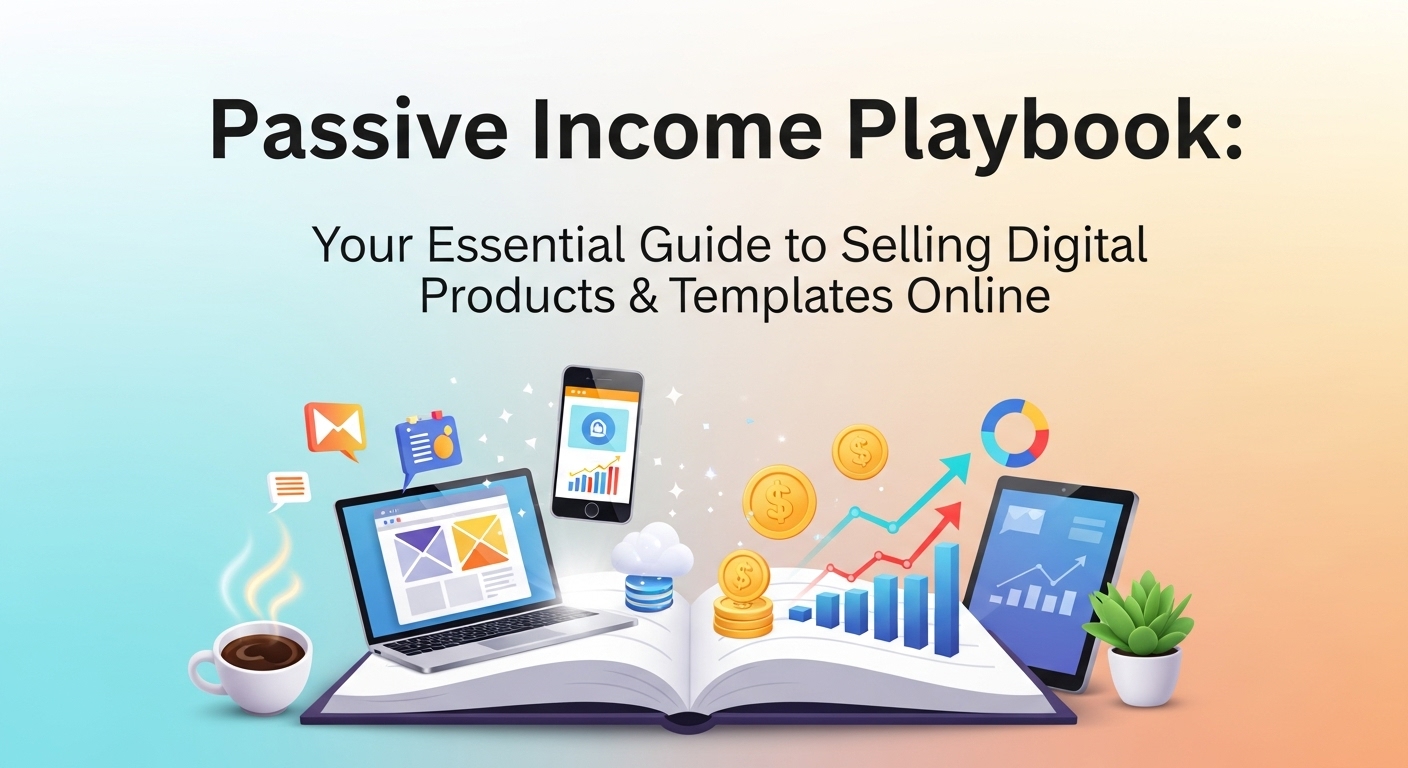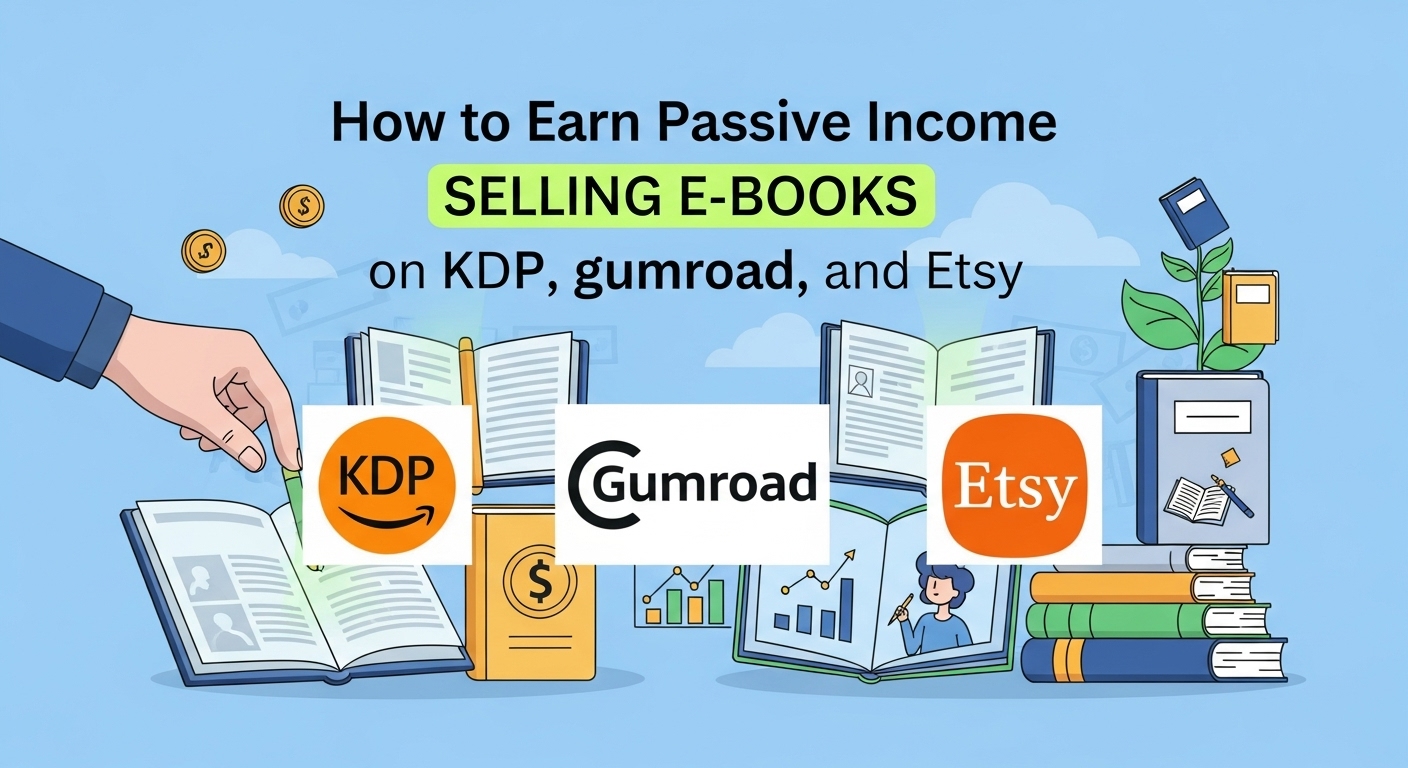The Dream of Passive Income is Closer Than You Think
Imagine waking up to sales notifications, knowing you made money while you were sleeping. It sounds like a dream, but for a growing number of creators, it’s a reality powered by the digital economy. Welcome to the world of passive income, where your creativity and knowledge can be transformed into assets that work for you 24/7. This isn’t about getting rich quick; it’s about building a sustainable, scalable business that gives you back your most valuable resource: time. This guide is your playbook, a step-by-step manual designed to help you navigate the exciting journey of creating and selling digital products & templates online. Whether you’re a designer, writer, educator, or simply someone with a valuable skill, you have what it takes to build your own passive income stream. Let’s dive in and unlock your potential.
What Exactly Are Digital Products & Templates?
Before we build our empire, let’s lay the foundation. What are we actually selling? A digital product is any intangible item or piece of media that can be sold and distributed repeatedly online without the need to replenish inventory. Unlike physical goods, there’s no shipping, no manufacturing, and virtually no overhead once the initial creation is complete. This is the core of their power.
Examples of Popular Digital Products
The universe of digital products is vast and ever-expanding. Here are just a few popular categories to get your creative juices flowing:
- Ebooks and Guides: Share your expertise on any topic, from gourmet cooking to coding for beginners.
- Online Courses and Workshops: Create in-depth video or text-based lessons to teach a skill.
- Stock Photography and Videos: If you have a knack for visuals, sell your photos and clips to businesses and creators.
- Software and Plugins: For the tech-savvy, developing a simple app, WordPress plugin, or browser extension can be incredibly lucrative.
- Audio Files: This could be anything from meditation tracks and sound effects to original music and podcast intros.
The Unique Power of Templates
A special and highly profitable subset of this world is digital products & templates. Templates are pre-designed files that users can customize to save time and effort. They provide a framework, allowing someone with less design skill or time to create something professional and beautiful. Think of them as a ‘fill-in-the-blanks’ solution for a specific need.
- Social Media Templates: Instagram post/story templates, Pinterest pin designs, and YouTube thumbnail graphics (Canva is a popular tool for these).
- Website Templates: Themes for platforms like WordPress, Shopify, or Squarespace.
- Productivity Templates: Notion dashboards, digital planners for apps like GoodNotes, or advanced spreadsheet trackers for Excel/Google Sheets.
- Business Templates: Professional resume designs, business card templates, invoice forms, and media kits.
Why Selling Digital Products is the Ultimate Side Hustle
Still on the fence? Let’s break down the undeniable advantages that make selling digital products one of the most attractive business models in the modern age.
Low Overhead, High Profit Margins
Forget about warehousing costs, shipping fees, and material expenses. Your primary investment is your time and skill in creating the product. Once it’s made, the cost to deliver it to a customer is virtually zero. This means that almost every sale translates directly into profit, leading to incredibly high margins that are almost impossible to achieve with physical goods.
Create Once, Sell Forever
This is the heart of passive income. You pour your effort into creating a high-quality digital product one time. Once it’s listed in your online store, that single asset can be sold an infinite number of times without any additional work from you. While marketing is an ongoing process, the product itself becomes a tireless salesperson working for you around the clock, across the globe.
Global Reach and Instant Delivery
The internet is your storefront, and it has no geographical boundaries. You can sell your digital planner to someone in Australia just as easily as you can to your next-door neighbor. Delivery is instantaneous. The moment a customer makes a purchase, they receive a download link. This instant gratification leads to happy customers and eliminates the logistical headaches of international shipping.
Your Step-by-Step Guide to Creating Your First Digital Product
Ready to get started? Let’s walk through the process of bringing your first digital product from a simple idea to a market-ready asset.
Step 1: Find Your Niche and Validate Your Idea
Don’t just create what you *think* people want. Find out what they *need*. Start by brainstorming your skills, passions, and expertise. What do people always ask you for help with? What problem can you solve? Once you have a few ideas, validate them. Browse marketplaces like Etsy and Creative Market to see what’s already selling. Use keyword research tools to check search volume. Engage with online communities in your potential niche (like Facebook groups or Reddit) to see what questions people are asking. A validated idea is the foundation of a successful product.
Step 2: Choose Your Product Type and Tools
Based on your validated idea, select the best format. Is it a comprehensive ebook? A set of time-saving Canva templates? A detailed Notion dashboard? Your choice will dictate the tools you need. For visual digital products & templates, Canva is a fantastic and user-friendly starting point. For ebooks, you can use Google Docs or Adobe InDesign. For more complex products, you might need specialized software. The key is to start with tools you’re comfortable with to avoid getting overwhelmed.
Step 3: The Creation Process – Bringing Your Idea to Life
This is where the magic happens. Focus on quality above all else. A polished, professional, and genuinely helpful product will lead to great reviews and word-of-mouth marketing. Pay attention to design, even if you’re not a designer. Use clean fonts, a consistent color palette, and a logical layout. If you’re creating a guide or course, ensure the information is clear, concise, and actionable. Double-check everything for errors and get feedback from a trusted friend before you launch.
Step 4: Pricing Your Digital Product for Success
Pricing can be tricky. Don’t fall into the trap of under-valuing your work. Research competitor pricing, but don’t just copy it. Consider the value your product provides. How much time, money, or frustration will it save your customer? A price between $15 and $45 is often a sweet spot for entry-level products like templates and ebooks, but complex courses or software can command much higher prices. You can always adjust your pricing later based on sales data and customer feedback.
Setting Up Your Online Storefront: Where to Sell
Your brilliant product needs a home. You have two main options for selling your digital creations.
Marketplaces like Etsy and Creative Market
Pros: These platforms come with a built-in audience of millions of buyers actively searching for products like yours. They handle payment processing and are relatively easy to set up. It’s a great way to get started and validate your products quickly.
Cons: You’ll face a lot of competition, and the platform will take a percentage of each sale in fees. You also have less control over your branding and customer relationships.
Your Own Website with Shopify or Gumroad
Pros: You have complete control over your brand, pricing, and customer experience. You build a direct relationship with your customers and can keep a larger portion of your revenue. Platforms like Gumroad and Payhip are incredibly simple to start with. Shopify offers more power and scalability.
Cons: You are responsible for driving all of your own traffic. This requires a solid marketing plan from day one, which can be a steeper learning curve for beginners.
Marketing Your Digital Products & Templates Like a Pro
Creating a great product is only half the battle. Now you need to get it in front of the right people.
Leveraging Social Media
Visual platforms are your best friend. Pinterest is a powerhouse for driving traffic to digital products & templates. Create beautiful pins that showcase your product in action. On Instagram and TikTok, use Reels and short-form video to demonstrate the value of your product and share tips related to your niche. Focus on providing value first, and the sales will follow.
The Power of Content Marketing and SEO
Start a blog or a YouTube channel related to your niche. If you sell resume templates, write articles about job interview tips. If you sell meal planners, create content about healthy eating on a budget. By providing free, valuable content, you establish yourself as an expert and attract potential customers through search engines like Google.
Building an Email List
Your email list is your most valuable marketing asset. Offer a free digital product (a ‘lead magnet’) like a checklist or a small template in exchange for an email address. This allows you to build a direct line of communication with people interested in your niche. You can then nurture that relationship and promote your paid products to a warm, engaged audience.
Conclusion: Start Building Your Passive Income Empire Today
The path to a successful passive income business is not a sprint; it’s a marathon built one digital product at a time. It requires initial effort, a willingness to learn, and a commitment to providing real value to your customers. But the rewards—financial freedom, creative fulfillment, and control over your time—are immeasurable. You have the knowledge and the tools. The playbook is in your hands. The only question left is: what will you create first? Take that first step today, and start building the future you’ve been dreaming of.


